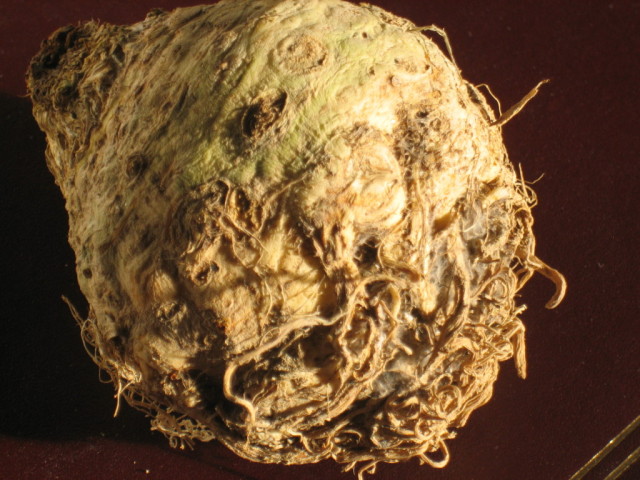
Celeriac (Apium graveolens Rapaceum Group) is also known as ‘celery root,’ ‘turnip-rooted celery’ or ‘knob celery’. It is a kind of celery, grown as a root vegetable for its large and well-developed taproot rather than for its stem and leaves. The taproot is typically used when it is about 10–12 cm in diameter; about the size of a large potato. Unlike other root vegetables, which store a large amount of starch, celery root is only about 5-6% starch by weight. Celeriac may be used raw or cooked. It has a tough, furrowed, outer surface which is usually sliced off before use because it is too rough to peel. Celeriac is not as widely used as some other root vegetables, perhaps because it is harder to prepare and clean: it has been described as “a vegetable octopus” or “Rastafarian turnip” in reference to the tangle of rootlets that grow at the base.

So start by peeling the root vegetable, and pretty much discarding most of the octopus part, and cut it lengthwise. Do not wash prior to the peeling. The outer proteins will make a sort of slime that will result in slipping of of the peeler, making peeling harder.

Cut the root in even pieces. Not very small or very big. Evenness is more important that size. It will guarantee an even doneness. Now you can wash the root pieces, but since the dirt is at the peel, there is not much to wash.

Put them in a pot with plenty of water and boil them until tender soft. Meaning… when you pinch them with your tongs the will yield but not fully fall apart.

Once done drain them and let them cool a little, in a rack , strainer, or a steam basket…

The meantime return to your pot and add a tbsp of olive oil. and let it heat up under medium heat. I added what was left in the bottle…

Dumb in there the the celeriac. And turn it around to coat it, and heat it up.

Brink out your spice box… oh you don ‘t have one… oh I am sorry.. that was mean… (hahahahaaa)

And pick which ever you like. Just keep in mind that celeriac has a strong celery taste, but very saddle sweet flavor, so it can take strong aromas, like nutmeg, pepper, smoked paprika, chipotle, but not very big taste, so not too much salt or too much heat. for this one I add black pepper and smoked paprika. Both add aroma, that blends well with the celery root and taste don ‘t interfere with the taste of the root.

Give them a quick stir to coat them on the root pieces, and let them soak the spicy goodness.

Now take them of the hit and add a cream, milk or half-half (my choice). Do you see all those bits stack at the bottom, slightly burned? Mmm yummy… Yumm-i-e….

And mash them!!! Don ‘t over-mash. It will become very gooey. I also happen to like them them chunky. Then…

Serve… Eat…. Repeat…
So from the land down under celery, comes a new dish with the part we never use or consume. The root of a very fragrant but fibrous vegetable; the celery. So enjoy the endless celery tasty, the mildly sweet flavor, and the interesting texture. They are not, and should not be confused with mashed potatoes. They are far less starchier and far less dense. They are completely different and they worth a shot.


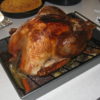
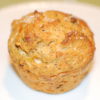

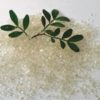

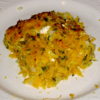

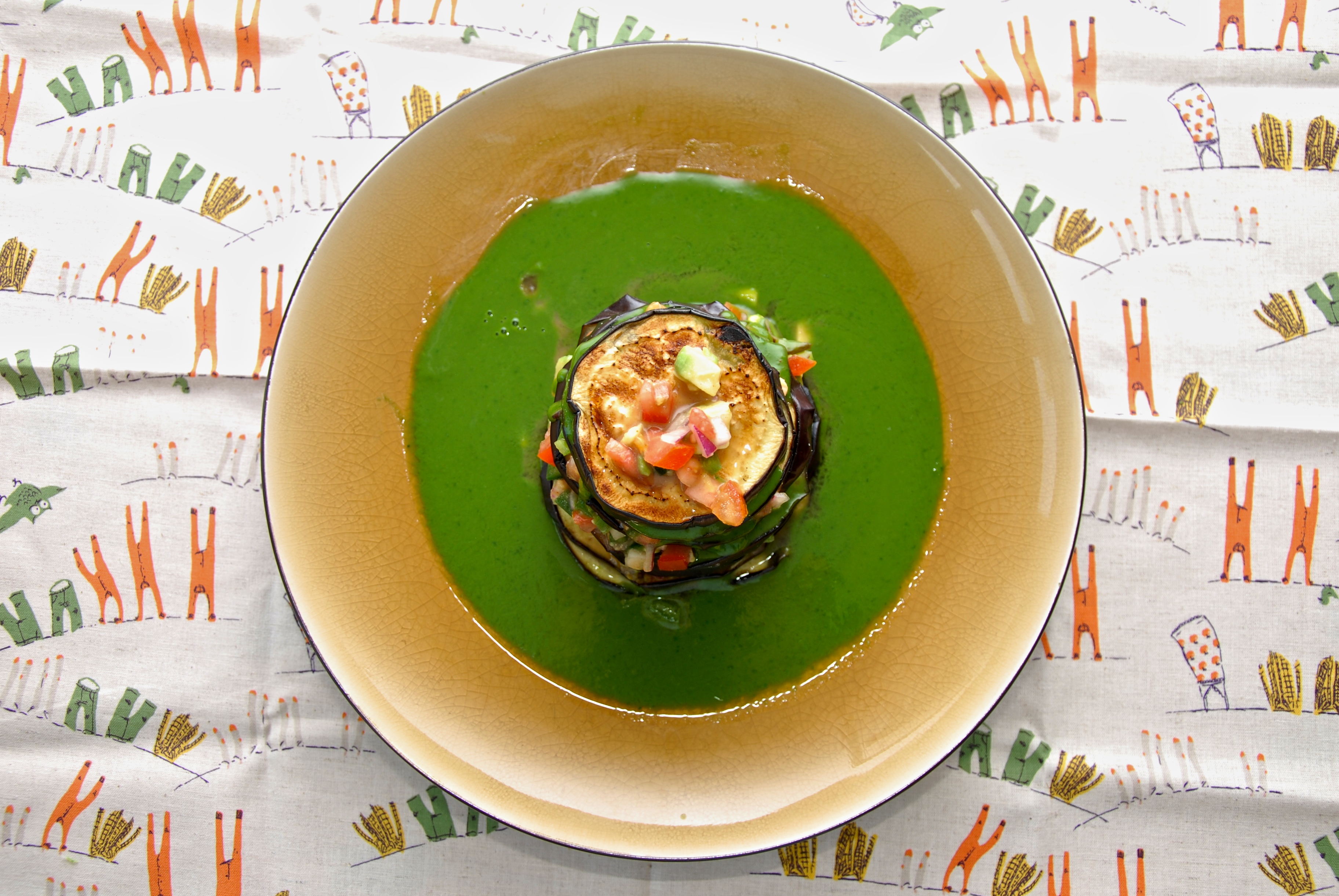
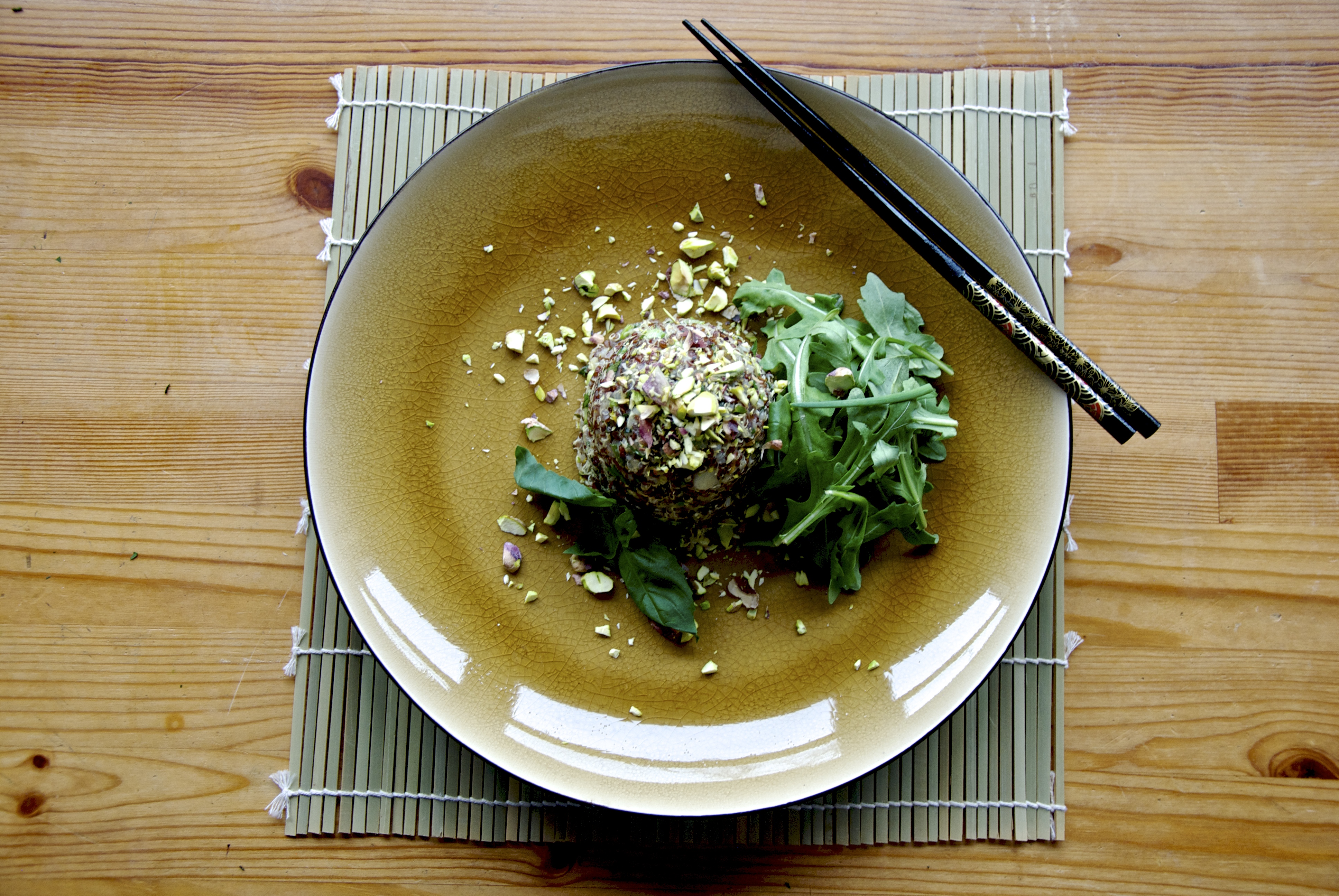
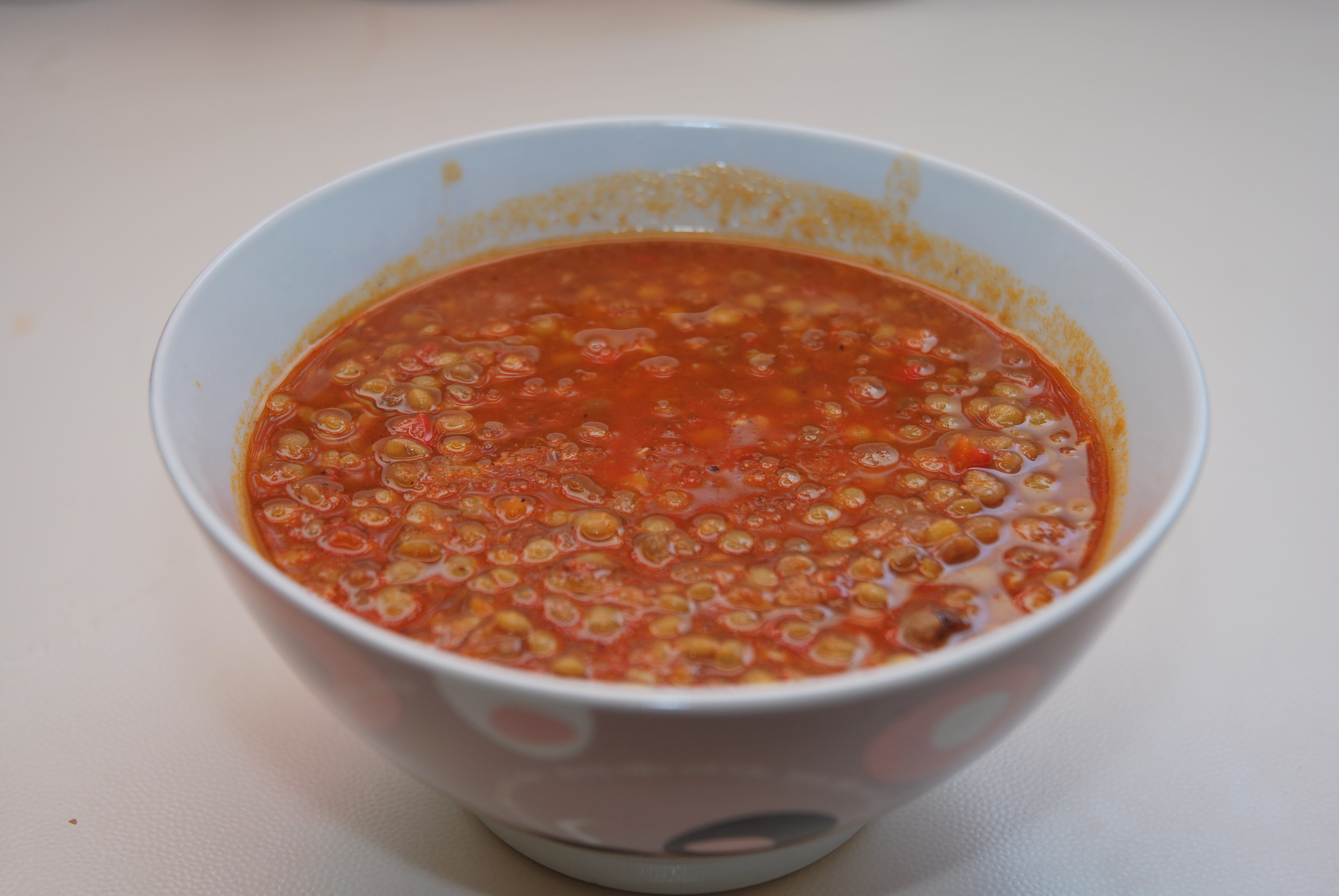
Leave a Reply